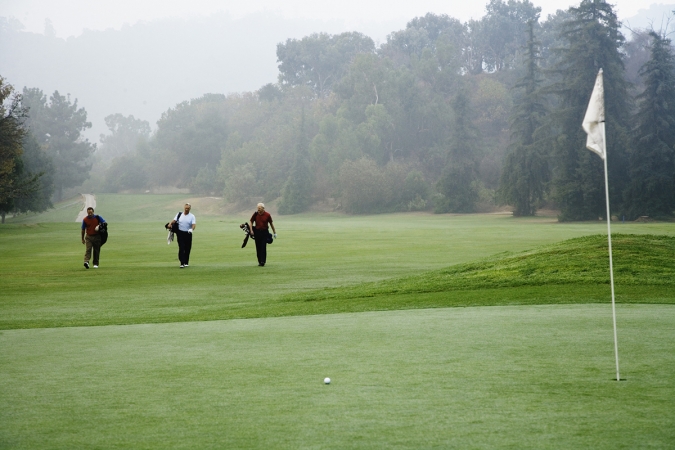
For Mark Burns, 70, a retired carpenter who lives with his wife Cathy in Carthage, Texas, much of his exercise during the last two decades occurred on the golf course.
“As I approached retirement age, I stayed active and continued to play lots of golf,” said Burns. “Sometimes I played 50 rounds a year. I was a decent player and had a nine handicap. I really enjoyed it.”
The sport can deliver many health benefits, especially when walking the course instead of riding a golf cart. Walking can burn twice as many calories, which helps manage weight, lower blood pressure, improve the heart muscle and reduce the risk of chronic diseases.
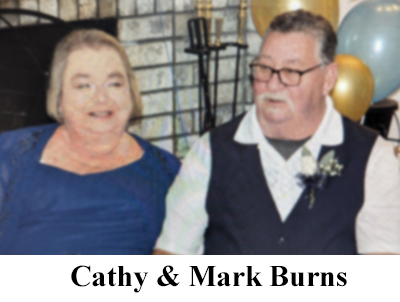 Yet despite the exercise, Burns continued to battle Type 2 diabetes, a chronic disease that occurs when the body has problems controlling blood sugar and converting it into energy.
Yet despite the exercise, Burns continued to battle Type 2 diabetes, a chronic disease that occurs when the body has problems controlling blood sugar and converting it into energy.
“My blood sugar has always been high,” he said. “For the past 20 years, my A1C has been between seven and nine percent.” (According to the CDC, people with diabetes have A1C test results at 6.5% or higher.)
That’s why Burns’ recent cardiac event pointed to a more serious problem.
“It was late in the evening, and I had just played virtual golf on my new Oculus headset,” recalled Burns. “After a couple of rounds, I suddenly couldn’t catch my breath. I felt progressively worse by the minute.”
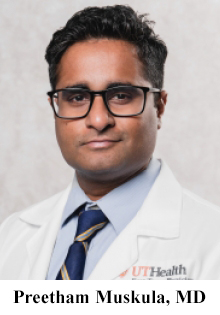 “When I asked Mark if he was okay,” said his wife Cathy, “he said ‘No, I need an ambulance.’ After calling for an ambulance, I also called our son who lives nearby. When the ambulance arrived, Mark was so impatient that he walked outside to meet the ambulance.”
“When I asked Mark if he was okay,” said his wife Cathy, “he said ‘No, I need an ambulance.’ After calling for an ambulance, I also called our son who lives nearby. When the ambulance arrived, Mark was so impatient that he walked outside to meet the ambulance.”
“If you say so,” said Mark. “I don’t remember anything else except waking up three days later.”
Widowmaker heart attack
As the ambulance rushed Burns to the ER at UT Health Carthage, he passed out and a breathing tube was inserted into his airway. When Cathy and their son arrived, they were told that Mark had experienced a massive heart attack and the hospital was preparing to send him by helicopter to UT Health Tyler.
When he arrived in Tyler, Burns was immediately transported to the cardiac catheterization lab where the team, led by Preetham Muskula, MD, placed three stents into arteries that were nearly completely clogged.
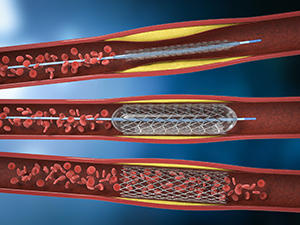 One of the clogged arteries was the left anterior descending artery, which provides 50% of the heart muscle’s blood supply. A heart attack that involves this artery carries the nickname “widowmaker” because many patients do not survive. Fortunately, Burns had been transported quickly to UT Health Tyler for the life-saving treatment.
One of the clogged arteries was the left anterior descending artery, which provides 50% of the heart muscle’s blood supply. A heart attack that involves this artery carries the nickname “widowmaker” because many patients do not survive. Fortunately, Burns had been transported quickly to UT Health Tyler for the life-saving treatment.
Burns remained on the cardiac unit for four nights, progressively getting better every day. The day after his breathing and feeding tubes were removed, he moved to another room before being discharged on the seventh day.
“For the first couple of days, I was still unconscious,” said Burns. “All I remember is everybody squeezing my hand.”
Cardiac rehabilitation
It didn’t take long for Burns to get back up on his feet and walk after the surgery.
“The physical therapists visited me the day I moved up to Five North and helped me walk down the entire hallway with a walker,” Burns said proudly.
His doctors told him to wait for six weeks before beginning rehabilitation. After that, he could do whatever he wanted.
“In the morning, I would get up and walk with my walker down the driveway and back,” said Burns. “We live on 17 acres and I mow 15 of them with a riding mower, so I always get outside and get that done when I need to.”
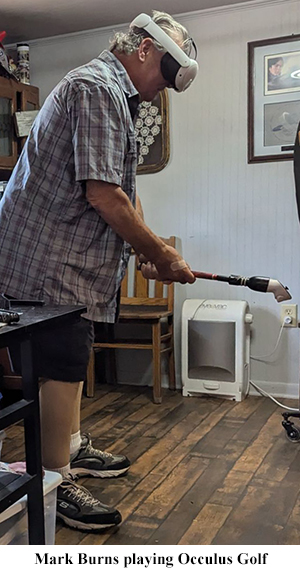 Two weeks into his recovery, Burns resumed playing golf, though this time it was virtual golf on his Oculus.
Two weeks into his recovery, Burns resumed playing golf, though this time it was virtual golf on his Oculus.
“You can purchase a golf club handle that fits into the Oculus sensor,” said Burns. “It’s the closest thing to actual golfing that I’ve ever done. I get exercise from playing, not the walking, of course but all the movements of swinging the club, turning and bending during a full golf swing. It’s wonderful. My son and I play twice a day when we can.”
“He tells me that it's just like real golf and I believe him,” said Cathy. “When he makes a bad shot or he hits it into the water, his shoulders slump and he looks like a little kid who just lost his best friend.”
Mark and Cathy, who both have diabetes, have started changing their lifestyle to live healthier lives.
“We’re eating half of what we used to, nothing much different, though I've taken all the sweets away,” said Burns. “Since my heart attack I've lost thirty pounds.”
Burns is especially motivated to thank the staff at UT Health Tyler for pulling him through such a traumatic event.
“Please make sure everyone at the hospital knows how much we appreciate them for all that they do,” said Burns. “Not just for me, but for everyone they care for.”
In an emergency, you can trust the team at UT Health Tyler to provide the swift, expert care you need. We are here for you 24/7, ready to respond to any health crisis with compassion and expertise. For more information about our emergency care, visit our website.
